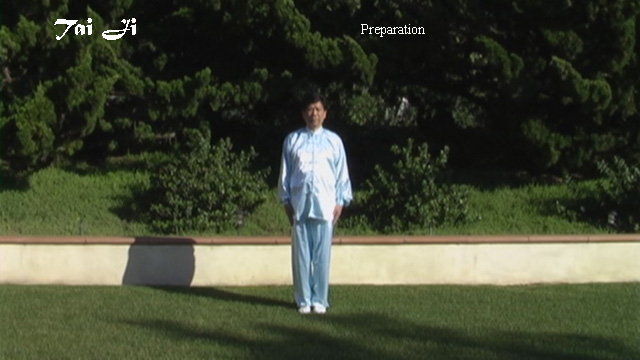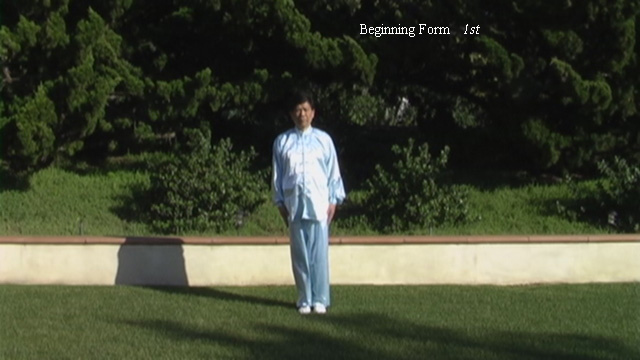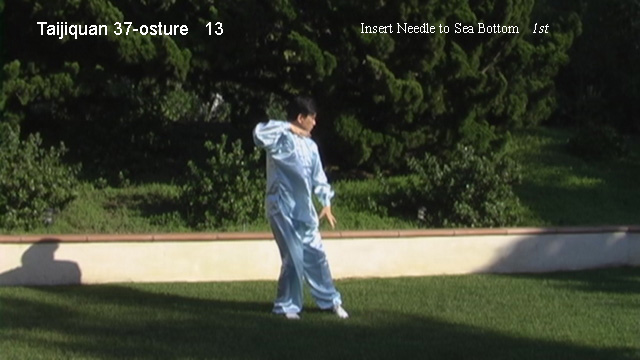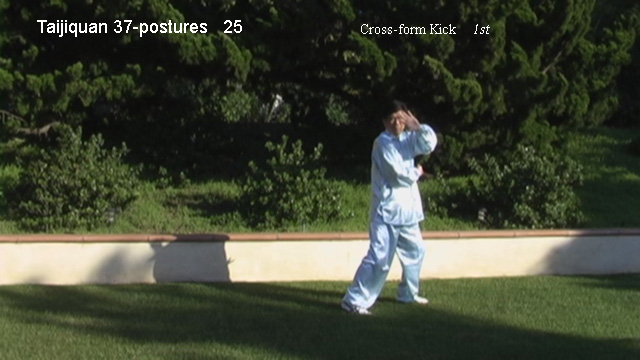Tai-Ji Theory
Tai-Ji (太極) is born of Wu-Ji (無極). It is the origin of dynamic and static states and the mother of Yin (陰) and Yang (陽). If they move, they separate. If they remain static, they combine.
The ancient Chinese philosopher developed the concept of Tai-Ji. Understanding this Tai-Ji philosophy that influenced traditional Chinese culture provides a necessary foundation for Tai-Ji Quan. Tai-Ji philosophy can be translated as the highest level of Tai-Ji Quan ( ) principle. It is based on three major principles of Tai-Ji philosophy: the changing trigrams of Yi Jing (易經), the Tai-Ji diagram (太極圖), and the five elements (五行).
In the system of the Yi-Jing (易經), there is the Tai-Ji, or the Grand Terminus. A Tai-Ji diagram represent Yin and Yang, respectively. Because each is shaped like a fish, they are called the Yin-Yang two fishes (陰陽雙魚). Tai-Ji generated the two form, or Liang-Yi (兩儀), Those two forms generated four symbols or Si-Xiang (四象). Those four symbols divided further to generate eight trigrams, or Ba-Gua (八卦). According to theory of Tai-Ji, the five elements, or Five Steps (五行) of Tai-Ji Quan are advance (前進), retreat (后退), look to the left (左顧), gaze to the right (右盼) and central equilibrium (中定). The Ba-Gua plus the Five Steps are termed the Tai-Ji Quan thirteen postures (十三勢 ), the basis for the different styles of Tai-Ji Quan.
The objectives of Tai-Ji Quan include harmony of the mind, promotion of health, and the attainment of rejuvenation and longevity.
Tai-Ji Quan
Tai-Ji quan (Taijiquan) is a traditional Chinese martial arts system based on that the hexagrams, the Yi-Jing, the concept of Ying-Yang, and the sophisticated methods and philosophy of Taoist meditation.Tai-Ji Quan is characterized by its long history, rich content, sophisticated techniques, complex methods. Before pursuing the history of Tai-Ji Quan, it is well to note that Chang San-feng of the Sung Dynasty (960-1278) with the development of Tai-Ji Quan in the twelfth century.
Tai-Ji principles describe practical approached to solving problems in natural as well as human realms. During the Yin Dynasty (1200 B.C.), these concepts were used to create the Chinese calendar and predict lunar and solar eclipses. Acupuncture, invented in the Chow Dynasty (696 B.C.) applies philosophy to curing illness and maintaining health. Tai-Ji Quan was another practical application of Tai-Ji philosophy. Tai-Ji Quan can be translated as the ultimate or highest of the martial arts. It is based on three major principles of Tai-Ji philosophy: the change trigrams of the I-Ching, the Tai-Chi diagram, and the five elements. The objectives of Tai-Chi Chuan include harmony of the mind, promotion of health, and the attainment of rejuvenation and longevity.
37-Postures Wu Style Tai-Ji Quan --- Three Courses
This sequence of 37-Postures is abridged and rearranged version of the traditional Wu style sequence. This abridged version has been in practice for may years. Currently, in order to help practitioners to perform every movement of the solo posture and to be able to practice well, each of the solo movements is provided with explanation in words as wells figures. Therefore, the 37-Postures which are subdivided into three parts which are provided with three courses (Class I , II and III). People can learn more benefits by consisting proctice of Tai-Ji Quan.
- Tai-Ji Class I --- ( 1-12)-Postures
- Tai-Ji Class II --- (13-24)-Postures
- Tai-Ji Class III --- (25-37)-Postures
37-Postures Wu Style Tai-Ji Quan --- Detailed Movements
This sequence of 37-Postures are made up by 178 movements. All movements composing a posture are in even numbers. The shortest posture is composed of 2 movements, whereas the longest one of 20 movements. The beginning form (1st posture) made up by 4 movements and closing form (37th posture) made up by 6 movements are showed in all three parts, respectively.
- Tai-Ji Class I --- 74 Movements of ( 1-12)-Postures
- Tai-Ji Class II --- 56 Movements of (13-24)-Postures
- Tai-Ji Class III --- 48 Movements of (25-37)-Postures




